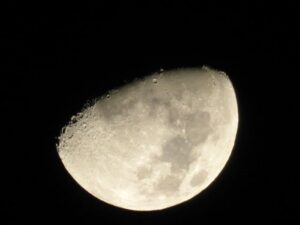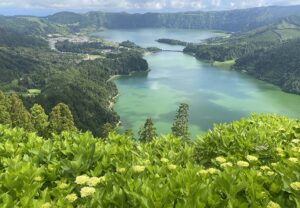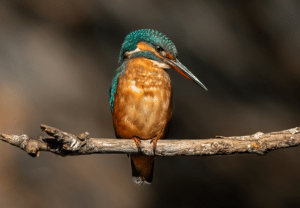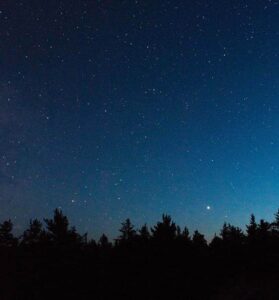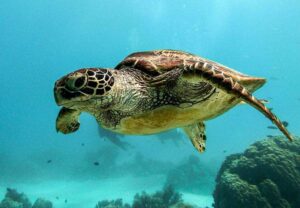By MARGARET BROWN features@algarveresident.com
Margaret Brown is one of the Algarve Resident’s longest standing contributors and has lived in the Algarve for more than 20 years.
AS AN escape from the bustle of city life and daily commute to work, a second home in the country might be just the place for a little peace and quiet, although reality does not always match the dream.
One person’s lullaby is another’s insomnia, the comforting sound of road and air traffic to a town dweller may be the antithesis of peace for someone living in the backwoods. In the sparsely populated valley above which we live, the noisiest nights are geared to the waxing and waning of the Moon, reaching crescendo at the full before diminishing to a silent night of total lunar darkness.
The distant shriek of a Little Owl is answered, relayed and perched on a dead almond tree outside our window banishing any hope of sleep. Like ripples on an incoming tide, one dog pipes up followed by countless others until a full sized orchestra of yips, barks and deep-chested rumbles echoes from the surrounding hills. Hunting dogs in runs, pet dogs, chained dogs and those running loose are rarely silent except when the moon is down.
Meanwhile, during cloudless nights of late there have been heavy dews and even a light dusting of frost one early morning, the silvered grass marked by passing animals heading for safety and their daytime hideaways. A rank smell of fox hung about the bushes and Millie, never one to pass up an opportunity, found where it had marked its territory and rolled there.
Later that day the Boss took us to Carapateira to have a look at some work recently carried out above and beside the sea, ostensibly to make life easier for visitors. Wooden walkways now divide the cliffs into parcels of rough sandy ground. The ancient vista of scrubby dunes, vertiginous rocks and wide blue Atlantic ocean have been reduced from breathtaking to ordinary by a rash of fenced off Miradouras (view points).
Wild beauty
A large car park alongside the lagoon is fine for those who are young and able, but big boulders now block natural parking spaces higher up the hill. This restricts the physically challenged who may wish to stroll along the top. Perhaps the idea is to protect unwary sightseers from falling on to the rocks below, and the wild natural beauty has been parcelled up to meet modern safety standards necessary to protect us from ourselves.
It was not the best of outings. A suburban dog until she came to live with us 18 months ago, Millie was unhappy during the drive and very nervous when taken off the lead in strange surroundings. Her rank smell of fox combined with an obvious dislike of being cooped up in the car added nothing to the pleasure of the day, and we were all happy to come back home.
Having noted the weather forecast for Britain on November 22, with its promise of icy blasts moving south from the Arctic, falling temperatures and snow in places, our daughter who is coming on holiday next week was hoping to say ‘good-bye’ to all that. After a long spell of unbroken sun and spring like days in the Algarve one prophet of doom says that is due to change on the day she flies in. If the local bugs are anything to go by he might be right.
While collecting loose bark from a stand of eucalyptus for use as firelighters, I uncovered a nest of about 50 Shield Bugs huddled together. Carefully replacing their winter shelter I moved to a neighbouring trunk and found several wasps also hiding from the expected cold and rain beneath a long strip of resinous outer skin. Other insects make a life on and in these tall aromatic trees, but one came indoors on Millie’s long hair the other morning which we had difficulty identifying. Half an inch long and with an elephant snout, it could be a Boll Weevil because there are still a few plants surviving from when cotton was cropped in this area. It was a strange creature that played dead when frightened, but with a remarkable turn of speed when left in peace.
Other much larger animals continue to leave their mark near human habitation – rarely seen at work but having the distinctive, bold and colourful style of pre-historic wall paintings found in caves and on rock faces. One such, to be found on a decrepit slab of wall down below the Fortaleza in Luz, appears to have a message protesting that juveniles of the species are barred from buying cigarettes during their formative years. Difficult to catch in the act, rebellious when told to remove same and likely to return after dark loaded down with spray cans to have another go, these graffiti artists exhibit no fear of heights. Daubs left on motorway bridges and other dangerous places indicate the agility of apes, especially the Chimpanzee.
Claims continue to be made that we share 98 per cent of our genetic makeup with Pan Troglodytes, a statement strongly refuted by the American Society for Human Genetics. It could be that the monkey in our genome reveals itself in this highly original manner, but with maturity follows more destructive outlets such as evicting long term residents from within our midst.
Storks that for many years raised their chicks on old factory chimneys in Lagos have returned to find their nests demolished and outsized candle snuffers in their place. There was a time when these great migrants were welcome as well as respected for their monogamous unions, and in past years accredited by parents with the delivery of new babies when awkward questions were asked.

